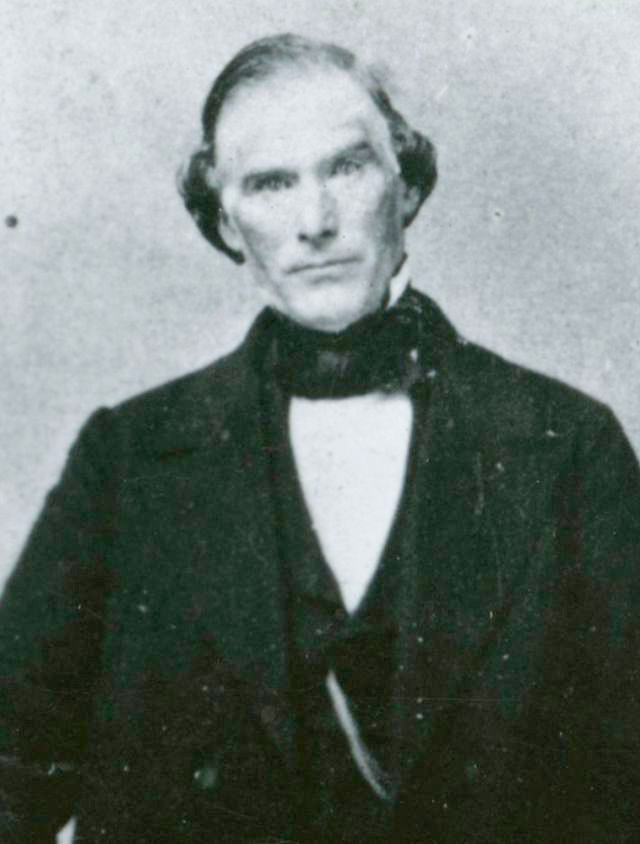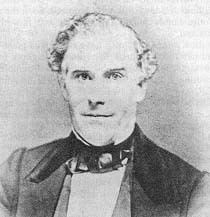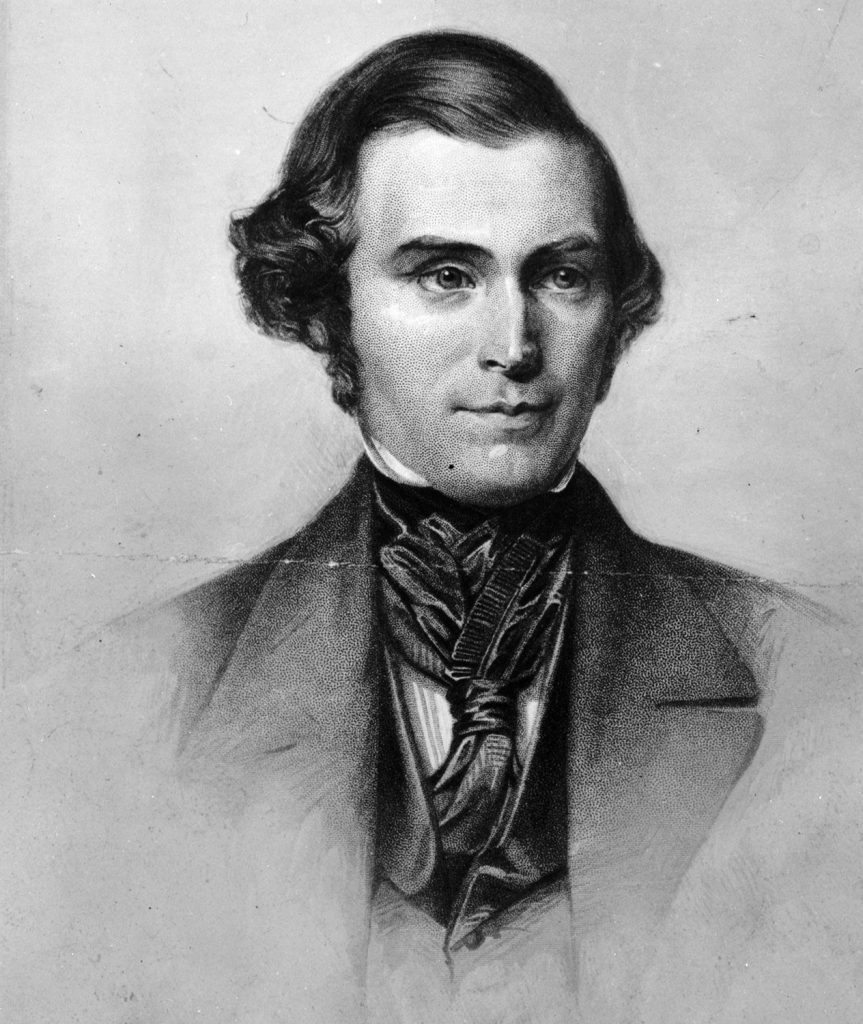Orson Pratt
(1811-1881)






By Susan Easton Black
“From the age of ten to nineteen, I saw much of the world, and was tossed about without any permanent abiding-place,” wrote Orson Pratt, “but through the grace of God I was kept from many of the evils to which young people are exposed. The early impressions of morality and religion instilled into my mind by my parents, always remained with me, and I often felt a great anxiety to be prepared for a future state.”1
The future state for Orson Pratt began when his older brother Parley shared news of the Book of Mormon with him. Orson accepted the truths of the Book of Mormon and was baptized on his nineteenth birthday by Parley. “Such a revelation is the Book of Mormon,” Orson wrote; “the most infallible certainty characterizes every ordinance and every doctrinal point revealed in that book.”2
Orson was called to be the first Elders Quorum president in this dispensation. He set an example for his quorum by serving missions. In between missions he labored on the Kirtland Temple foundation. Orson was one of the first recruits to join Zion’s Camp and march to Missouri in hopes of returning the exiled Latter-day Saints to their lands of inheritance. Of his experience in the camp Orson wrote, “Behold the presence of the Lord was with us by day and by night and his Angel went before us to prepare the way. Joseph often spake unto us from the mouth of the Lord. The promises of the Lord were verified. We were blessed and counseled from on high throughout our Journey.”3
In 1835 Orson was ordained an apostle of the Lord Jesus Christ. He served faithfully in the Quorum of the Twelve Apostles until the 1840s. “When I saw that he was very severely tried,” wrote John Taylor, “I talked with him for nearly two hours, to prevent, if possible, his apostasy.”4 On August 20, 1842, Orson was excommunicated. According to Wilford Woodruff, “John C. Bennett was the ruin of Orson Pratt.”5 Orson was not away from the Church long. On January 20, 1843, he was baptized by the Prophet Joseph Smith and given “the Priesthood and the same power and authority as in former days.”6
After the martyrdom of Joseph and Hyrum Smith, Orson aligned himself with the leadership of Brigham Young. He defended Brigham and journeyed with him in the vanguard company to the Rockies (see D&C 136:13). On their arduous journey Orson kept a record of miles traveled and calculated the latitude and longitude of important sites. He was one of the first men to view the Salt Lake Valley. “We could not refrain from a shout of joy,” Orson penned.7
After helping plat the City of Salt Lake, Orson returned to the Camps of Israel in Iowa and from there journeyed east to the New York Harbor. He then voyaged across the Atlantic to England. In the land of his ancestors Orson preached the gospel of Jesus Christ and made significant literary contributions, particularly as the editor of the Millennial Star.
In 1852 Orson was the first Church leader to publicly announce the doctrine of plural marriage. In so doing he set the stage for his remaining years as a strong defender of the faith, although it created tension between himself and Brigham Young. Brigham said to Orson, “You have been like a mad stubborn mule.”8 Brigham counseled him: “I want you to do just as you have done in your Apostleship, but when you want to teach new doctrine, to write those ideas, and submit them to me, and if they are correct I will tell you.”9 In spite of growing tension between Orson Pratt and President Young, when Brigham overheard someone disparage Elder Pratt, he said, “If Brother Orson were chopped up in inch pieces, each piece would cry out Mormonism was true.”10
In 1875 President Young reorganized the Quorum of the Twelve Apostles according to seniority in service. Orson Pratt, who had ranked second in the Quorum, was moved to fifth. John Taylor was named the senior Apostle. On September 19, 1880, after Orson said in his Salt Lake Tabernacle address that it was fifty years to the day that he was baptized, Wilford Woodruff said,
We are not in the habit of flattering any man, but I want to say a few words concerning Brother Pratt. . . . I never saw a man in my life that I know of that has spent as few moments idly as he has. I have never seen a Storm at sea so heavy—even when shipping seas over the bow, side and stern—but what he would read his book. . . . He has improved his time. . . . I feel to thank God that we can still hear his voice.11
The last speech of Orson Pratt was given in the Salt Lake Tabernacle on September 18, 1881: “Tomorrow—if I live till tomorrow—I shall be seventy years of age. They are the years appointed to man. . . . I know what my hopes are. I know the plan of salvation.”12 Fifteen days later, on October 3, 1881, after telling Joseph F. Smith what he wanted inscribed on his tombstone—“My body sleeps for a moment, but my testimony lives and shall endure forever”—Orson died.13
1. Orson Pratt, “History of Orson Pratt,” Millennial Star 27 (January 28, 1865), 55.
2. Orson Pratt, Divine Authenticity of the Book of Mormon (Liverpool: Orson Pratt, 1851), 83.
3. Orson Pratt Diaries, 6 May 1834, as cited in Breck England, The Life and Thought of Orson Pratt (Salt Lake City: University of Utah Press, 1985), 35–36.
4. John Taylor, “Succession in the Priesthood,” p. 18, in England, The Life and Thought of Orson Pratt, 81.
5. Wilford Woodruff Journals, August 1842, as cited in England, The Life and Thought of Orson Pratt, 81.
6. “Minutes of the Council of Twelve,” January 20, 1843, as cited in England, The Life and Thought of Orson Pratt, 84–85.
7. Orson Pratt, “Extracts from Journal,” Millennial Star 12 (June 15, 1850), 178.
8. Brigham Young quote, in England, The Life and Thought of Orson Pratt, 210.
9. “Historian’s Office Minutes,” April 5, 1860, in England, The Life and Thought of Orson Pratt, 215.
10. “Young Office Journal,” October 1, 1860, in England, The Life and Thought of Orson Pratt, 217.
11. Wilford Woodruff, “Remarks by Elder Wilford Woodruff,” in Journal of Discourses, 21:314–315.
12. Journal History of the Church, September 18, 1881.
13. Orson F. Whitney, in Conference Report, October 1911, 68.
Additional Resources
- Biography of Orson Pratt (josephsmithpapers.org)
